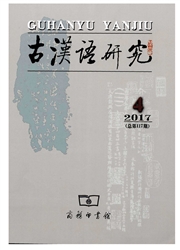

 中文摘要:
中文摘要:
副词“极其”是由动词“极”和指示代词“其”经常共现连用虚化而成的。副词“极其”萌芽于南宋,形成于元明,成熟于清朝。节奏的双音化、表述的程度化和指称的虚无化是副词“极其”词汇化的三个基本动因。被限定的对象从双音到多音、从谓语到定语、从程度到状况是“极其”作为典型副词成熟的三项功能标志。
 英文摘要:
英文摘要:
The Chinese adverb "极其(extremely) " was formed by the Chinese ancient verb "极(do the utmost) " and demonstrative pronoun "其(his or that) " constant consecutive uses and co-occurrences. The adverb "极其" sprouted in the South Song dynasty, took shape in the Yuan and Ming dynasties, and was mature in the Qing dynasty. The motives of lexicalization of adverb "极其" was the developing and accomplishing of dual syllables, of expressing extremity and of referring nominalization. The three markers as the typical adverb "极其 " was the evaluating course about the functions of the word : the syntactic function from disyllables to polysyllables, the distribution from the predicate to the attribute and expressive function from state to the degree.
 同期刊论文项目
同期刊论文项目
 同项目期刊论文
同项目期刊论文
 期刊信息
期刊信息
